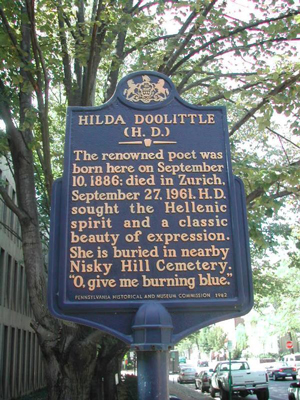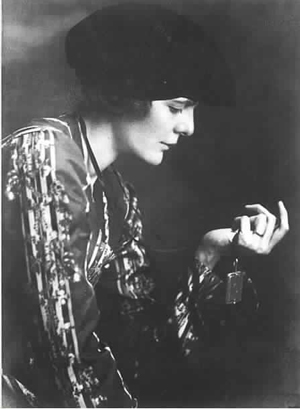
Since the late 1800s, Bethlehem has produced a steady stream of homegrown authors, from Yale alumnus Steven Vincent Benet to best-selling crime author Sarah Strohmeyer.
But few of them were as important to literary culture as the modernist Hilda Doolittle, who lived in Bethlehem for the first 10 years of her life beginning in 1886, and, yet, even people at the historical society in the town in which she was born didn't know her name.
Doolittle, known to modernist writers in the early part of the 20th century as “H.D.,” was the rambunctious and wild child of a Lehigh University professor and a music teacher at the Moravian seminary. Her time with Ezra Pound helped get her legacy “built more on the largeness of her life than on the deft precision of her verse,” according to ExplorePAHistory.com.
Before writing this piece, I was only familiar with her most well-known poem, “Helen,” and, so, the Explore PA History description of her kind of ticked me off a little. But as I explored her work for this piece, I began to think perhaps the website description is apt after all. Her visual imagery is lush and colorful, but her metaphors are often heavy-handed.
Perhaps that's because she was the first well-known female Imagist, a style of poetry focusing on—you guessed it—imagery over metaphor.
But H.D. was a fighter. More so than her poetry, her real contribution to the literary scene of the time was helping to open the scene up to women. Maybe that's why she couldn't resist a certain heavy-handedness in her poetry. The poem “Eurydice” is based on the myth of Orpheus and Eurydice, a Greek story about a man who tries to bring his wife out of Hell but is tricked by Hades. In Doolittle's version of the myth, she speaks first-person as Eurydice and essentially asks Orpheus how he could have been so dumb as to be tricked by the devil.
Doolittle was a Bethlehem original, an important connection point between the religious culture of the 19th century and the modern liberation of the 20th. She also was instrumental in bringing art and culture out of the 19th century and into an era where a female voice was acceptable.

Her connection to the Lehigh Valley was forged at a very young age, and, despite being a globetrotter, she never really got rid of it. When she died in Zurich in 1961, her body was brought back here to be buried at Nisky Hill Cemetery.
Bethlehem's influence on Doolittle's writing probably is small, but the influence of her mother's Moravian background is large. The Moravians are a culture steeped in signs and symbols. She grew up with a strict knowledge of the rhythmic sense of Moravian music and the importance of imagery as a way of expressing grander concepts. Yet she also grew up in a world of tradition, traditions she couldn't help but oppose later on with her poetry.
Though her legacy is broad in artistic circles (my girlfriend from Texas knew who she was), her legacy in Bethlehem is relatively forgotten, and that's sad. Her astronomer father who helped make Lehigh University's Sayre Observatory is internationally known. Her mother was an important voice in Moravian music. And H.D. herself was a smart, proud and independent woman in an era where that wasn't exactly an okay thing to be.
So why not check out some of her poems? You may not like them; I don't like all of them. But the power in them, the rebellious quality, still rings in them years later.
"The Pear Tree": http://www.poemhunter.com/poem/pear-tree/
















